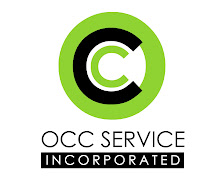Santa heard you last year. You want a tablet. Let me be your
Grinch for a few paragraphs.
I’m not going to sit here and tell you that tablets aren't great. A year ago, I left my iPad at a friend’s house overnight. Feeling
completely out of sorts, I had to turn to the methadone of Windows Solitaire. I use my iPad every day, possibly every hour.
What I do with it is the most trivial of human activities: Checking what my friends
are doing, browsing amazon for stuff I don’t need, and yes… especially
solitaire. Not to say I don’t get work email
on it, I do. But I reply using a computer like a grownup.
It’s
not that tablets are doomed to such unimportant applications. In fact, more and
more workplaces are adding tablets into their business process. A client of
ours is introducing MS’s new Surface to take patients signatures on legal
forms. Others use them as an interface for retail customers, reducing the sporadic
long lines that drove new business away. You aren't going to do any of these things
with yours, but you could, and that is comfort enough.
The
real reason I am being a Grinch today, is because regardless how you will use
your tablet, you will certainly bring it to work. Assuming that you are a client,
now we have some skin in the game. Small business networks still default to an
IP range accepting 254 network devices. That would still be more than enough if
the following devices hadn't started using some of those addresses: Office
phones, cell phones, air conditioners, coffee makers (seriously), and tablets.
That isn't to mention their computers, laptops, servers, and networking
equipment. We have a client with 55 employees that is fresh out of IP
addresses. The solution is simple, leave your tablets at home….. No not really.
While
nothing I've said so far is untrue, my conclusion is ridiculous. To limit the
use of newer devices because of the short term engineering problems they pose
or doubts about their productivity would be completely wrongheaded. It is impossible to tell what innovations are
going to be useful. Having employees
bring their own devices into work presents some experimental opportunities at
low-to-no cost of the business. Every person who has ever worked for OCC started
in this field because of how amazed they were with the power of these very
innovations. It is power that manifests after a heck of a lot of playing around. …….. and his screen grew three sizes bigger
that day.
Ted Hughes
Managing Director
OCC Service Incorpoarted

1 comments:
BYOD (Bring your own device) is a growing trend and is here to stay.
Just look at this article from May in Forbes. http://www.forbes.com/sites/markfidelman/2012/05/02/the-latest-infographics-mobile-business-statistics-for-2012/ “This year, more than 50% of network devices will ship without a wired port”
This is both exciting and scary. Enterprise sector has had some time to plan for this but the SMB market has not. It is time of us IT folks in the SMB market to wake up and start drastically changing how we do things.
A great point you made was that many small business have 254 IP’s and more devices take up address. This is a point where we have to convince business owners that they have to invest in their networks as a business need and not an expense. With $1500 buy in you can lay the foundation of for this to never be an issue and to allow your business to grow. As we see to many time a business will explode and then the network becomes an issue because it was only designed for 10 people. Here is how we can set up a network from the ground up with plenty of room to grow.
1. VLAN’s are you friend. A VLAN is a virtual network. What that means is that we can put all your phones on a separate network just by a slightly different configuration. So now instead of just 254 devices you can have up to 508 addresses with just adding one VLAN. We can have multiple VLANs.
2. Guest Wireless. You should always have a guest wireless network. This is where your guest can connect and get internet without having access to you network. Also this is a great place to have your employees connect there idevices and personal toys that need the internet. Again VLANs are you friend in this aspect as well.
3. “But the Linksys router doesn’t support all these cool things” You are correct. This is where the part about investing in IT comes in. You can pick up a Sonicwall TZ215 of $850+ and it will do multiple wirelesses (internal wireless and guest wireless) as well as VLANs. Toss in a support contract and some extra license and you even have a SSLVPN that can be used by your employees to get access to your network.
The moral of this story is that if you were a chef you wouldn’t run out to Wal-mart to get you knives. If you need computers to make money they are you knives and you should get the ones that are going to last you a long time.
Post a Comment